It's 5:00 AM when the sun drives me out of the tent. The morning air is still fresh, but the sun is already strong enough to heat up our tent considerably. The red fabric of the tent colors the entire space in a deep orange, somehow fitting these sauna-like temperatures inside the tent. Our tent is set up a bit away from the road, next to a small lake. The landscape is rocky and sparse, with only a few trees providing a little shade. Our tent gets none of this.
It's only a fifteen-minute walk to the beach. I am accompanied by the constant chirping of crickets, the buzzing of bumblebees and bees, the twittering of birds, and the morning breeze that gently blows through the leaves of the trees. As the sun shines on my face, I recall a saying by Pipi and wonder why I don't enjoy nature this early more often.
And then, one must also have time to just sit and look ahead!
Pippi Longstockings, (Astrid Lindgren)
I can see the sea sparkling in the sun from afar. It is gently dotted with smaller and larger limestone towers, known as Raukar. I make myself comfortable on one of the smaller ones, enjoying the breathtaking view and letting the sun play around my nose. Next to me, there are only a few seagulls, which, like me, seem to be enjoying the morning sun.
For me, Gotland means deceleration. Hardly anywhere else do I find it so easy to switch off, to let myself drift. This here is my very own love letter to the Baltic Sea jewel.
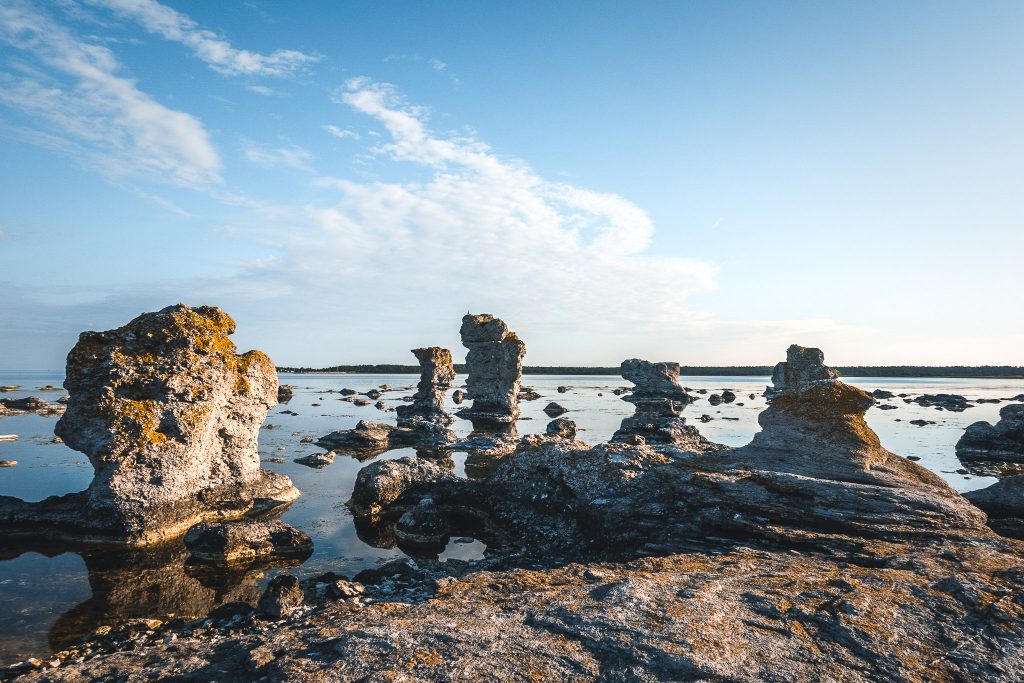
A Step into the Past – Visby
Visby is known for its roses, church ruins, and the impressive old town. Some may recognize the latter from the old Pippi Longstocking movies. The town unfolds its charm especially when strolling through the old alleys, having a cozy coffee in one of the many cafes, or enjoying good food with a view of the old houses, church ruins, or out to the Baltic Sea. On the plates, lamb as well as fish and seafood are particularly common – Gotland is famous for both.
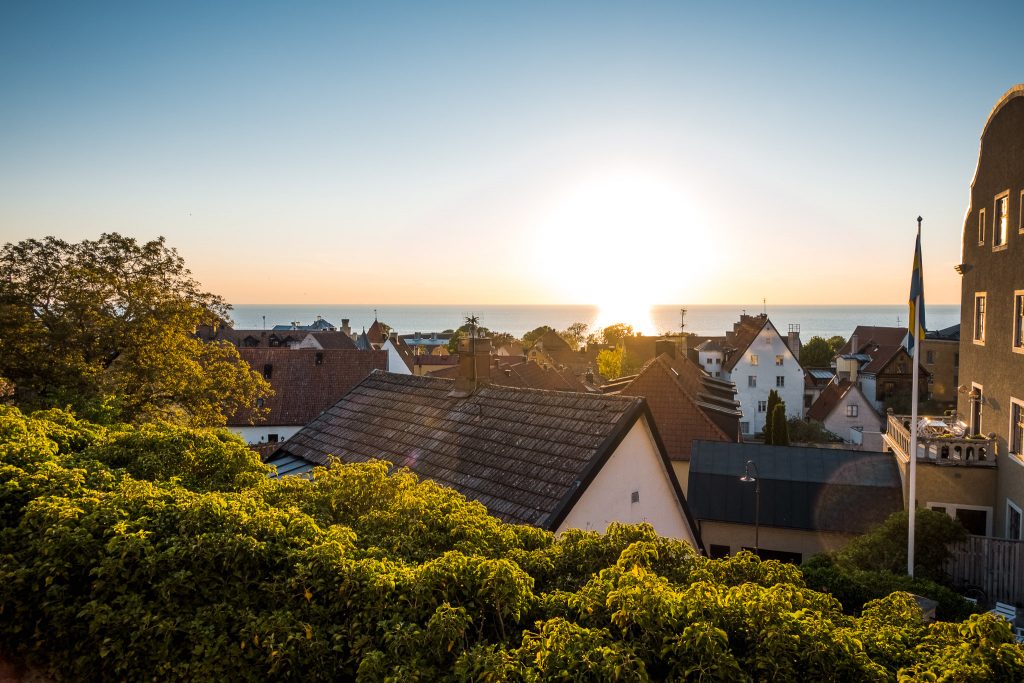
Visby's Turbulent Past
The former Hanseatic city has a history full of events. Already in the times of the Vikings, the central location of the Baltic Sea island made it one of the most important trading places, as evidenced by numerous finds. Nowhere else in Scandinavia have more coins
From the 12th century, Visby grew into one of the most significant cities and the center of Baltic Sea trade. This brought considerable wealth to the city but also made it a coveted target for invasions, both from the rural surroundings and overseas.
The old town, as it can be admired today, had already been practically completely placed under monument protection in the 19th century with its 3.5 km long ring wall. Since 1995, the city has also been part of the UNESCO World Heritage Site.
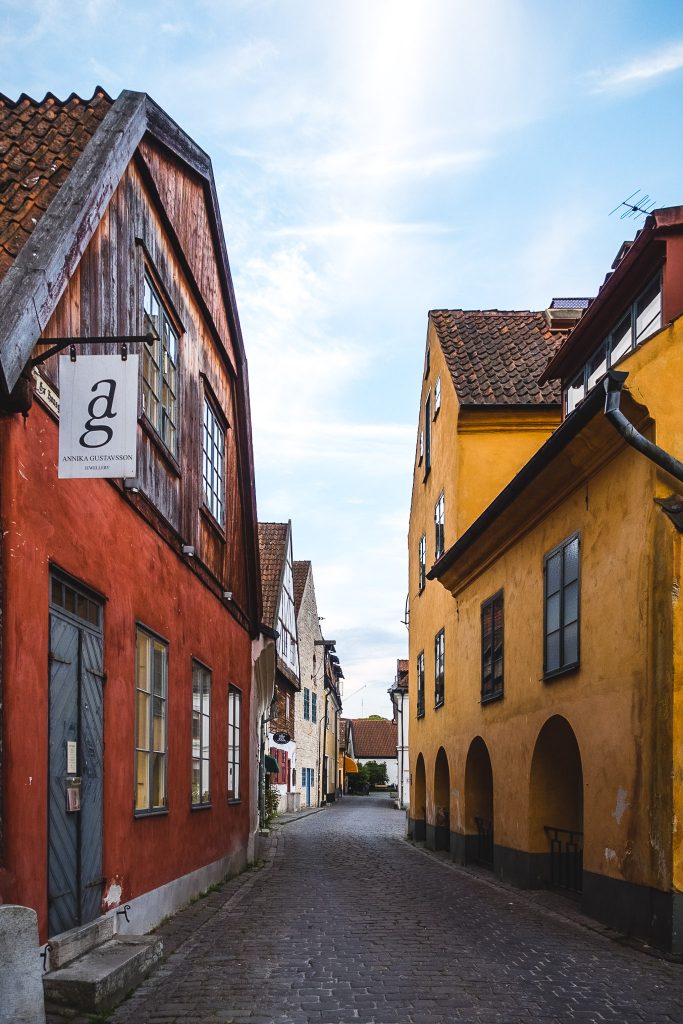
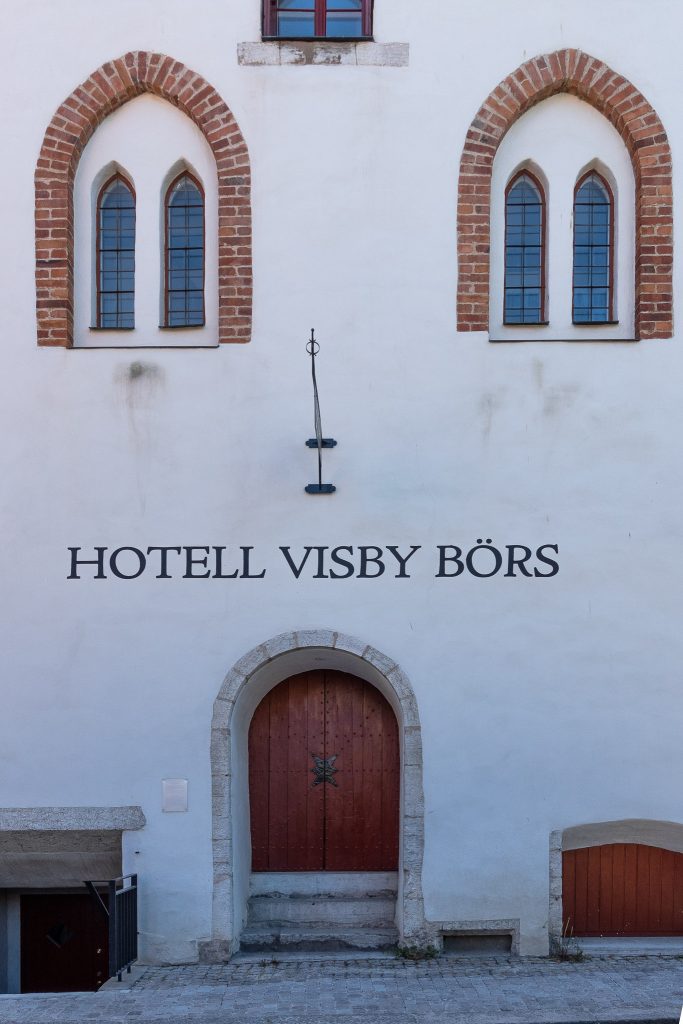
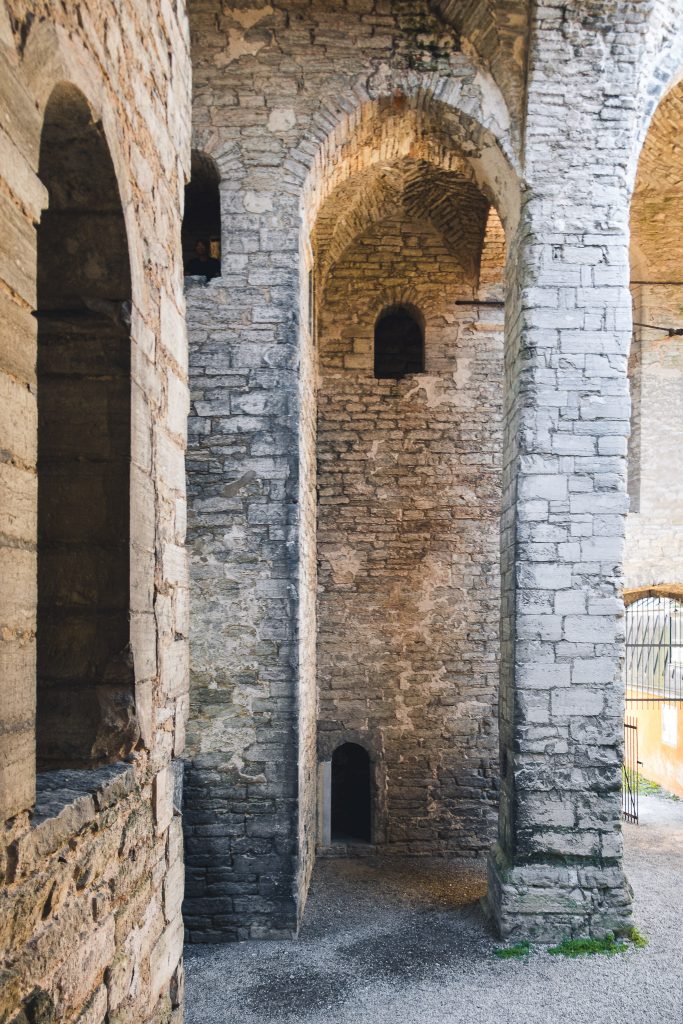
Stroll through Visby's historic alleys
The best way to explore Visby is by taking a stroll through the city. Walking through the old alleys, I feel like I'm on a journey to the past. Every house tells its own stories and a hint of this past wafts from every corner. I can't help but stop every few meters to marvel at the old houses. In addition to the more than 100 houses from the 12th to 14th centuries and some classic wooden houses from the 18th century, the many church ruins are particularly striking. In Visby, there were once about 14 churches, but today they have either fallen into ruins or disappeared entirely. Only the cathedral from the 13th century is still preserved.
Also dating from the 13th century is the 3.5 km long city wall. It offers one of the best spots in the city to enjoy the sunset with a bottle of wine and a few shrimps.
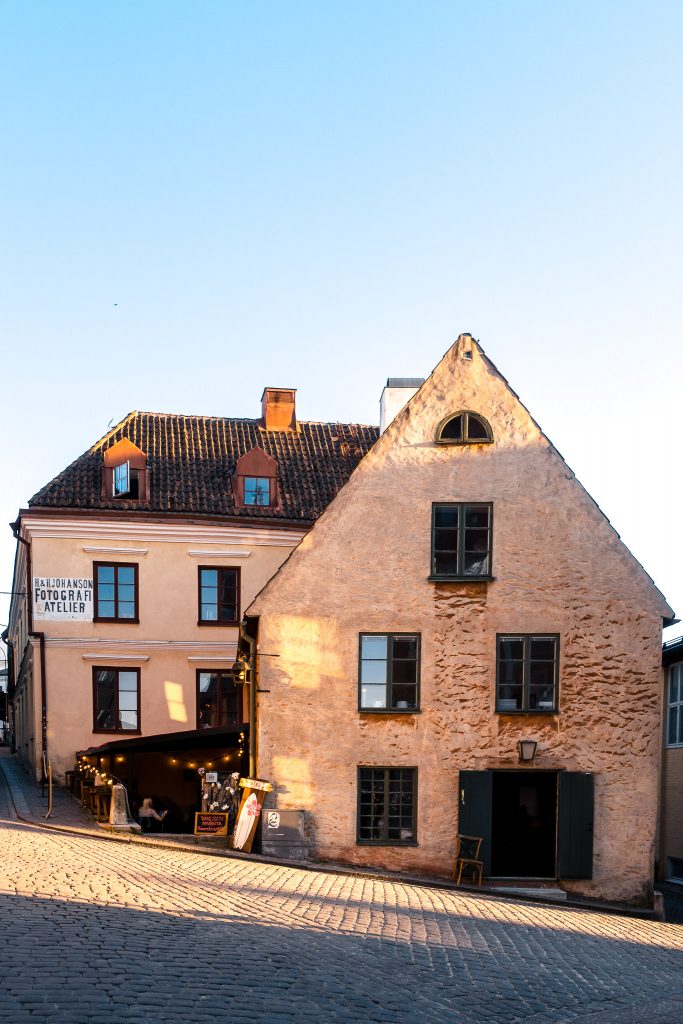
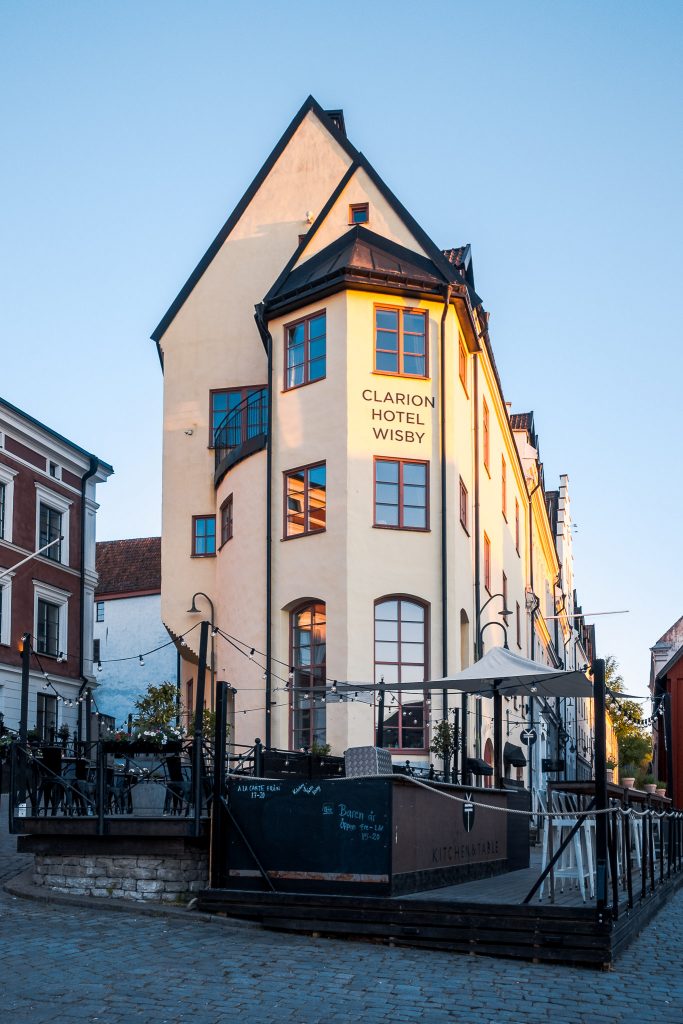
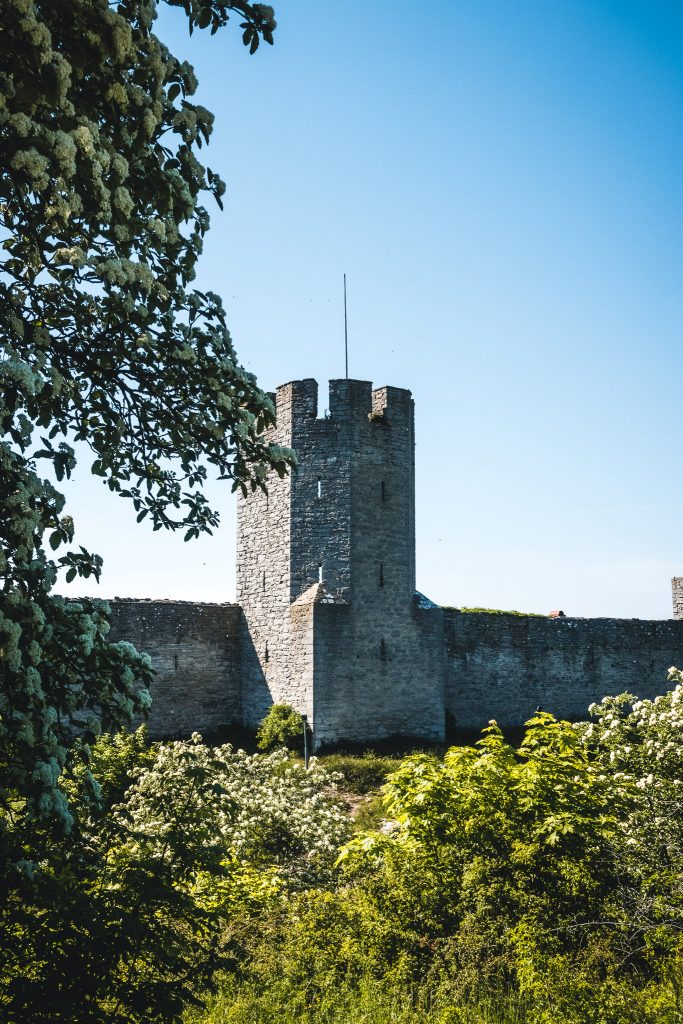
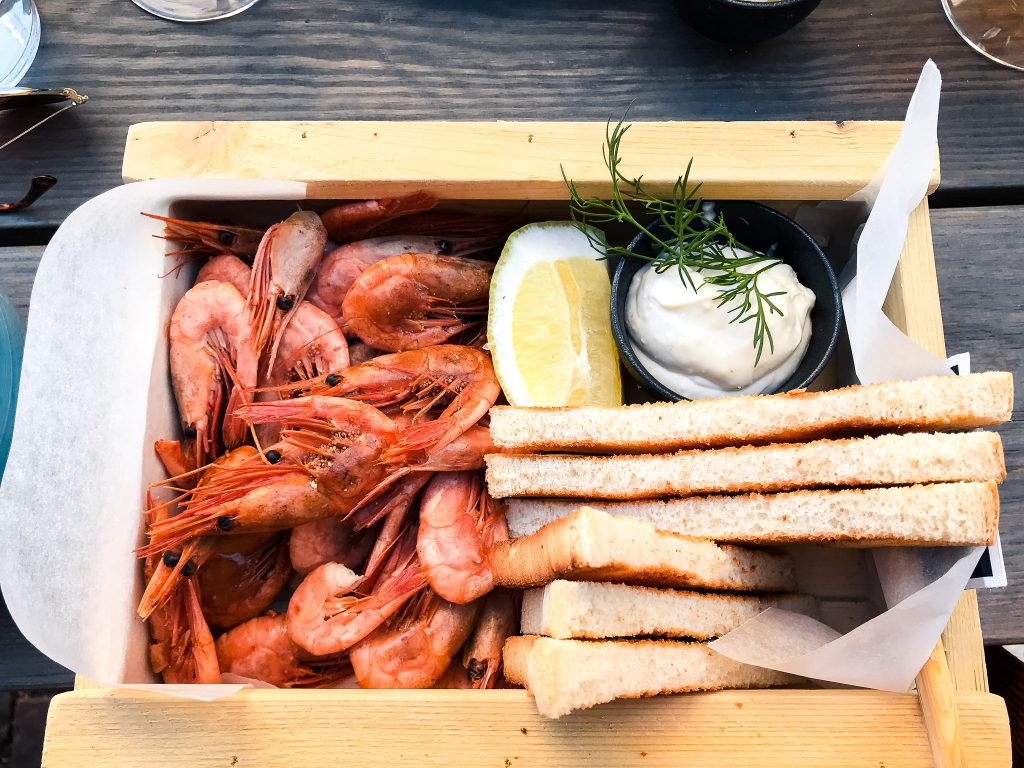
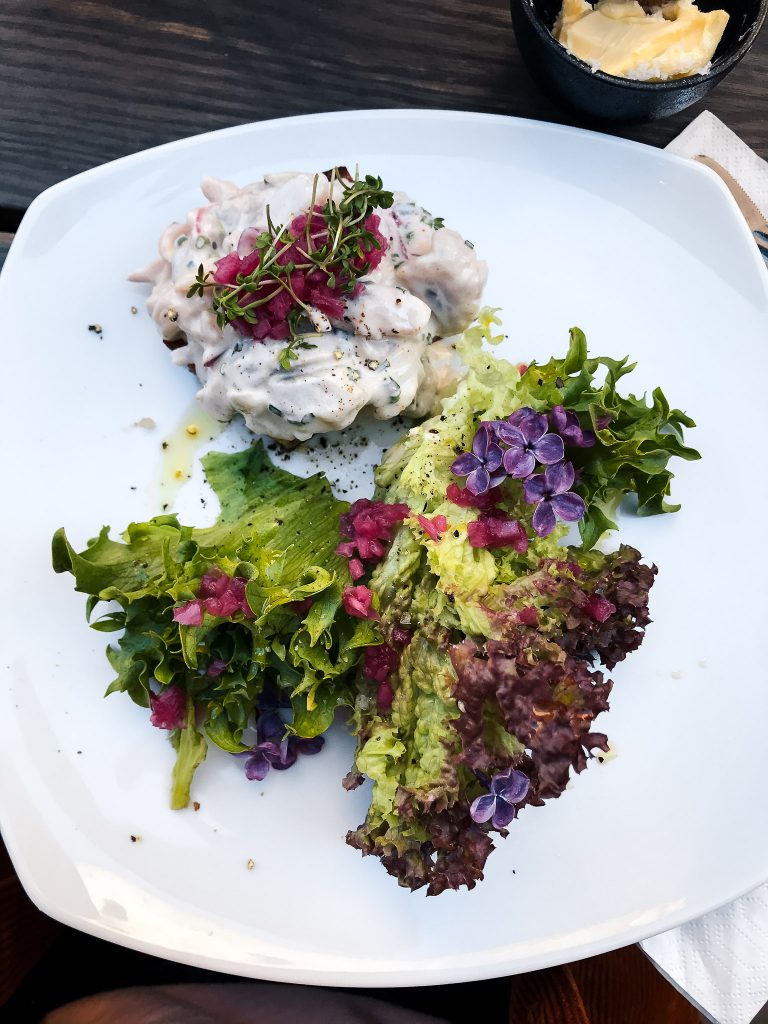
Along the West Coast to Fårö
After two days in Visby, we drive along the west coast heading north. After only a few kilometers, we turn onto a small gravel road. It would not be the two hours that Google had estimated for the trip to Fårö. Instead, we will only reach the small island in the north the following day. The roads wind along the beach, up small hills, and back down, past old and new fishing huts. We stop at many places to enjoy the breathtaking views.
Sigsarve Beach
The most spectacular moment awaited us at Sigsarve Beach. The Gotlandsleden trail passes by here. On one side of the beach, the path leads down the steep cliffs, across the beach, past a few old fishing huts, and on the other side, the trail winds its way back up the cliffs. From the top, you can enjoy a magnificent view of the hidden beach, the steep cliffs, and the Baltic Sea. The sight literally left us speechless and captivated us. So, we took out the coffee maker, spread out a picnic blanket, and enjoyed. Sometimes it's simply enough to sit together in silence and marvel at the beauties of this world.
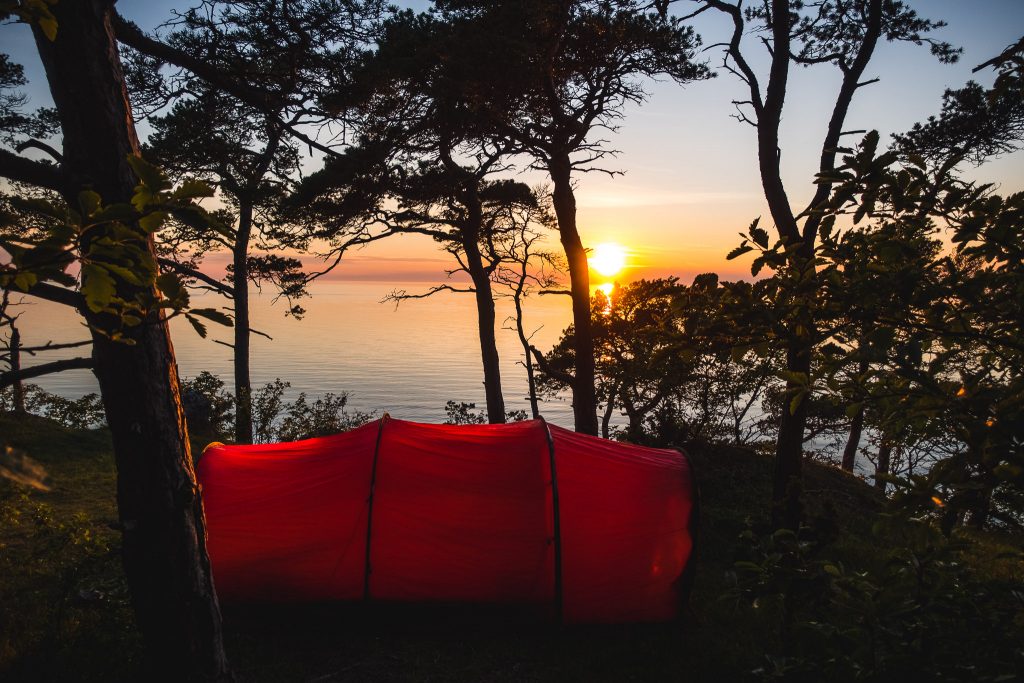
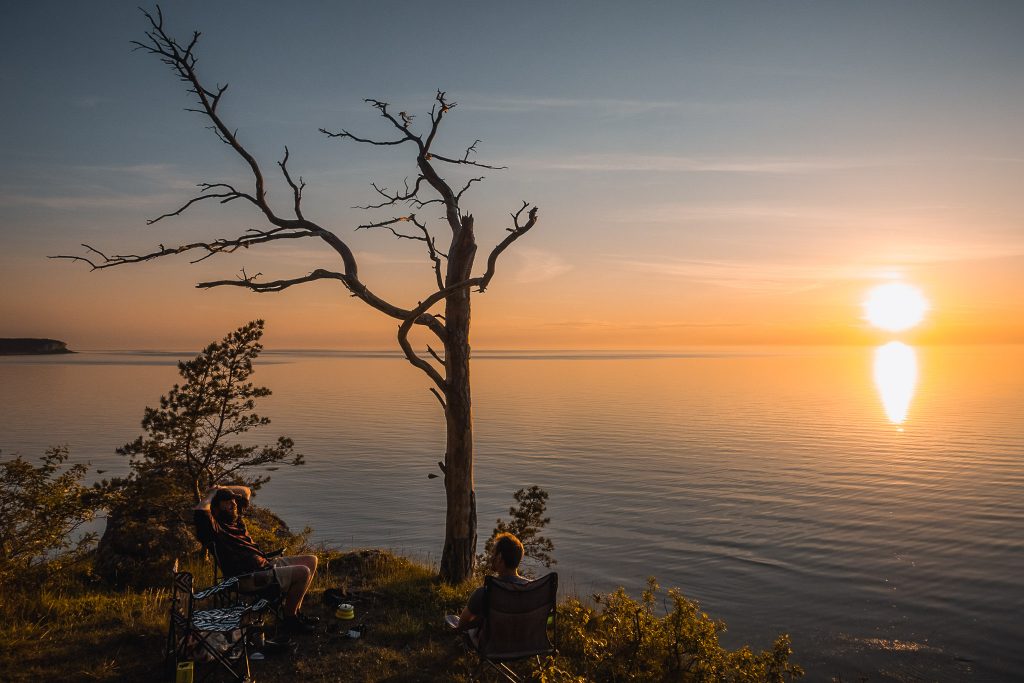
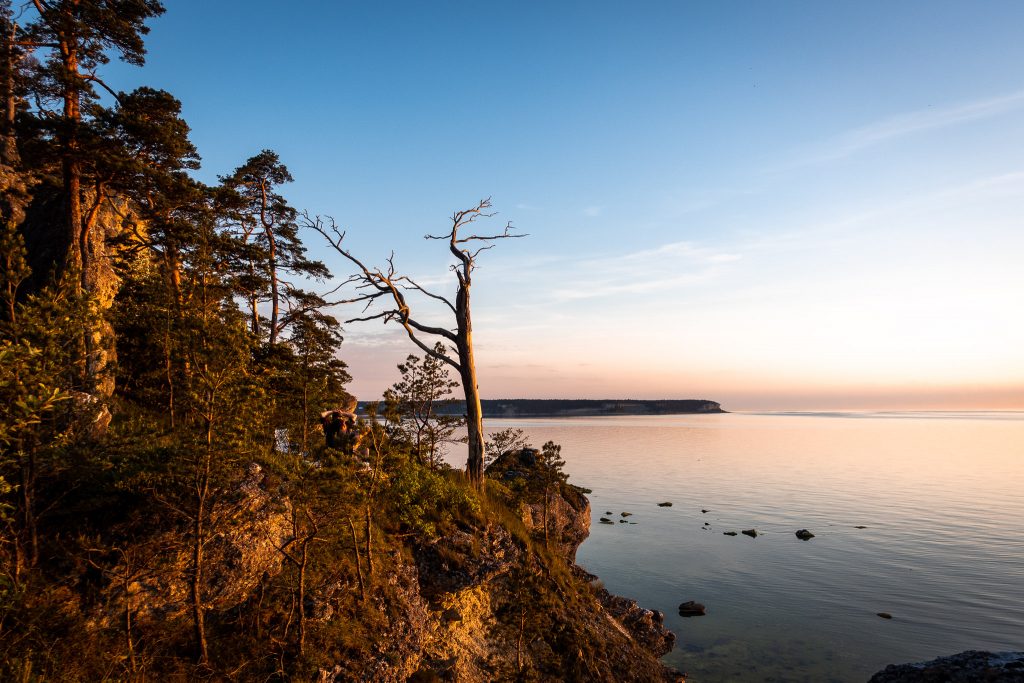
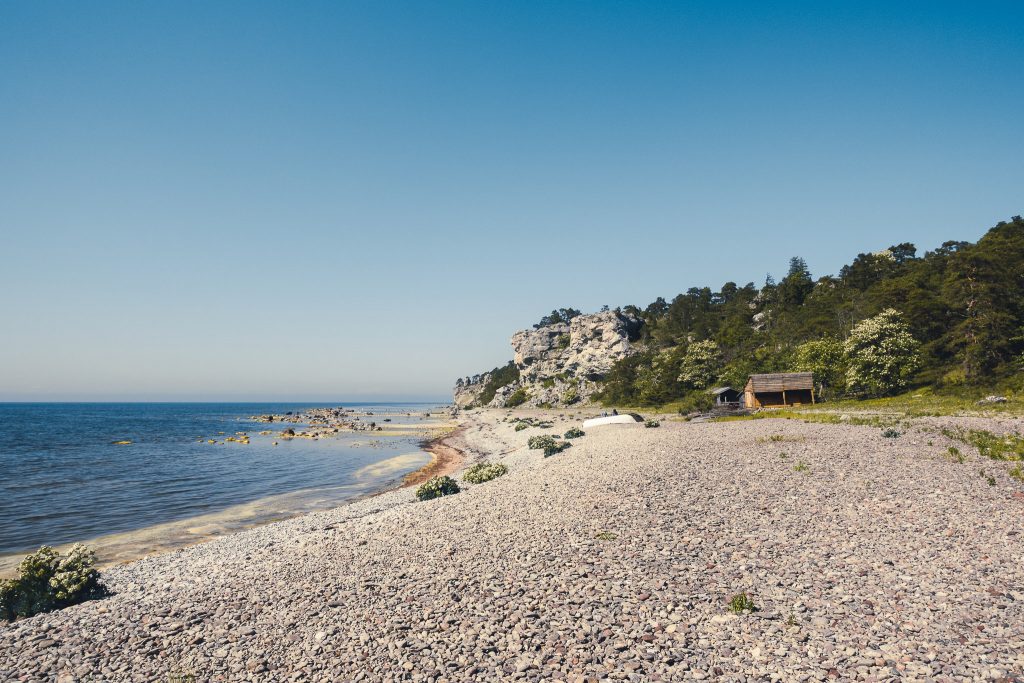
The Island of Fårö
Back on the small gravel roads, our journey takes us to the island of Fårö the next day. Fårö is more barren and wild compared to Gotland. The small island in the north exudes its own unique fascination. Anyone visiting Gotland should not miss this gem. A small ferry regularly departs from Fårösund. After a few minutes, it arrives on Fårö.
The Raukar of Fårö
Fårö is home to some of the most famous and impressive Raukar. Like the entire island, these barren limestone formations - shaped by wind, weather, and waves - are witnesses of the island's long history. The most famous ones can be found at Gala Hamn, Digerhuvud, and Langhammers.
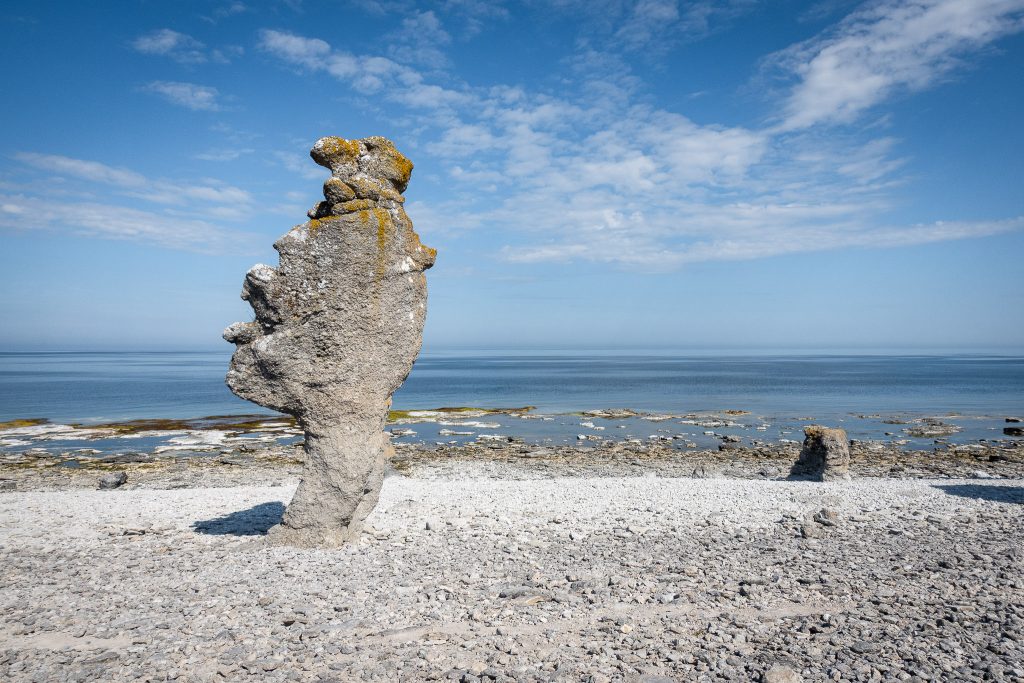
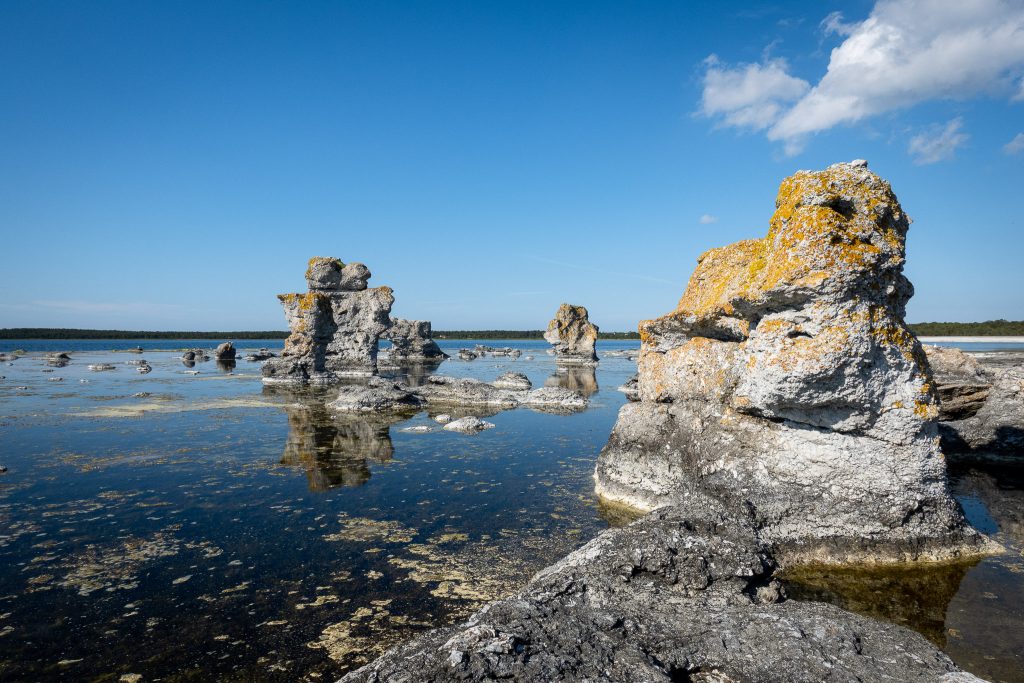
In addition to several stone formations guarded by these impressive limestone towers, Gotland also offers some dreamy sandy beaches. Those who, unlike me, wouldn't describe themselves as cold-natured will definitely enjoy it here.
Culinary Fårö
Culinary-wise, even the small Fårö has a lot to offer. A classic is undoubtedly Kutens Bensin & Crêperie Tati. The small crêperie is set up in an old gas station. In addition to excellent cuisine for crêpes and galettes, this unique location also serves as a small museum. Throughout the premises, you can find old vehicles from past decades. The perfect place to refuel both your appetite and energy.
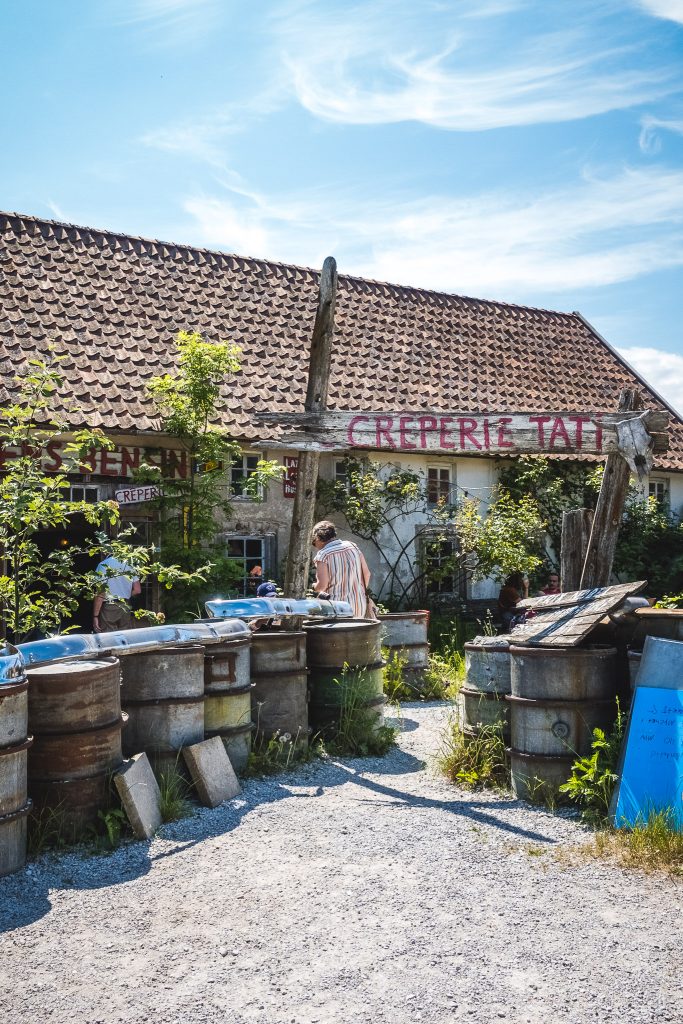
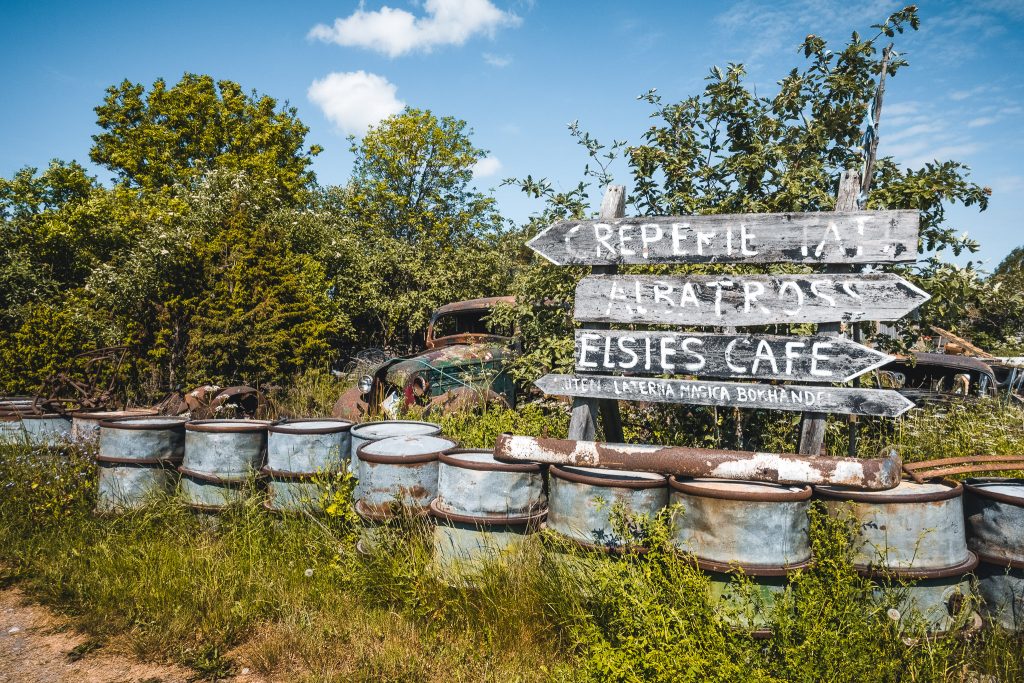
Gotland, and especially Fårö, are famous for their lambs. After not having tried lamb during our first visit, it was at the top of our to-do list during our second visit. While researching, we discovered the restaurant "Fårögården." The restaurant is located in a former stable and has a wonderful outdoor area where you can enjoy the evening sun fantastically. In addition to excellent food, Fårögården also offers accommodation options and coffee from its own roastery.
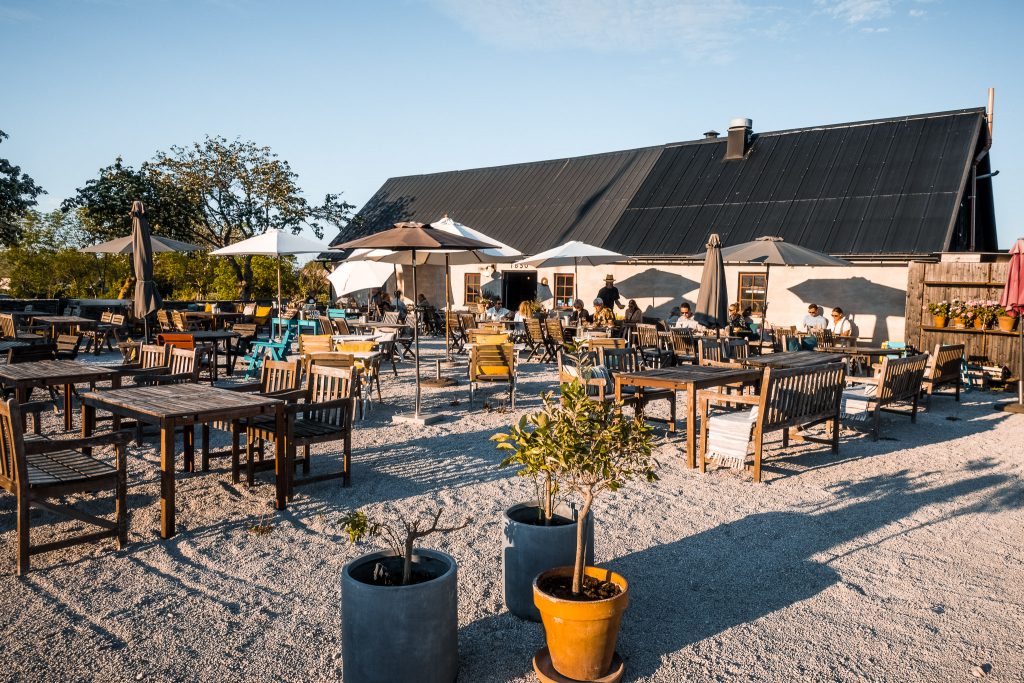
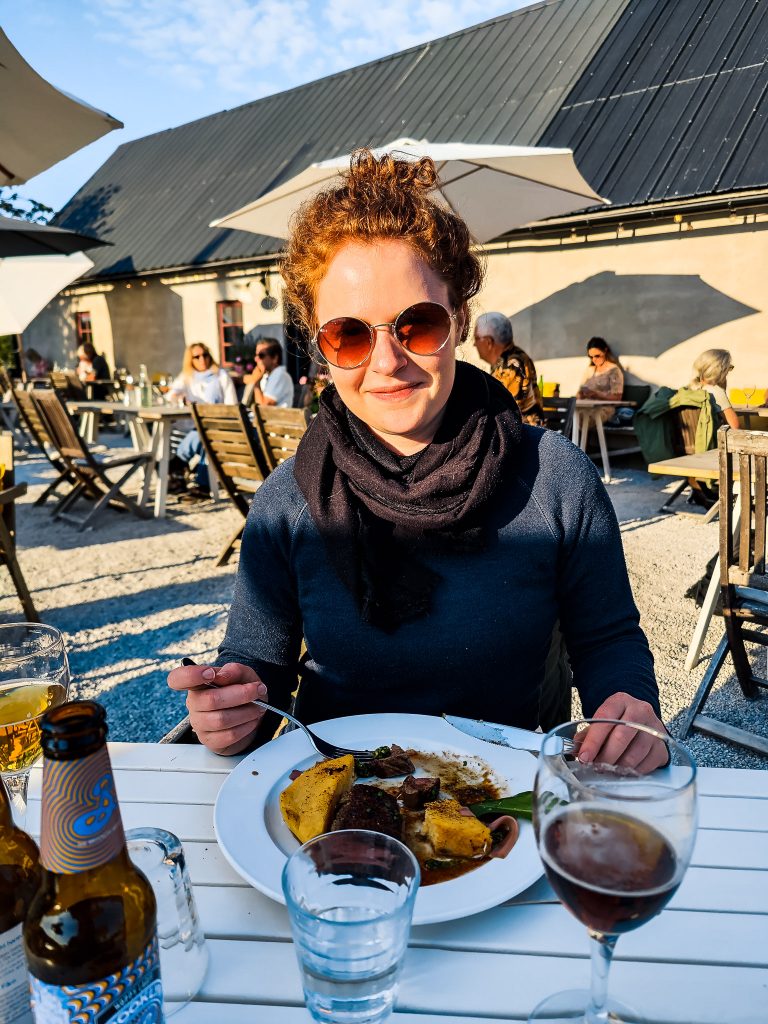
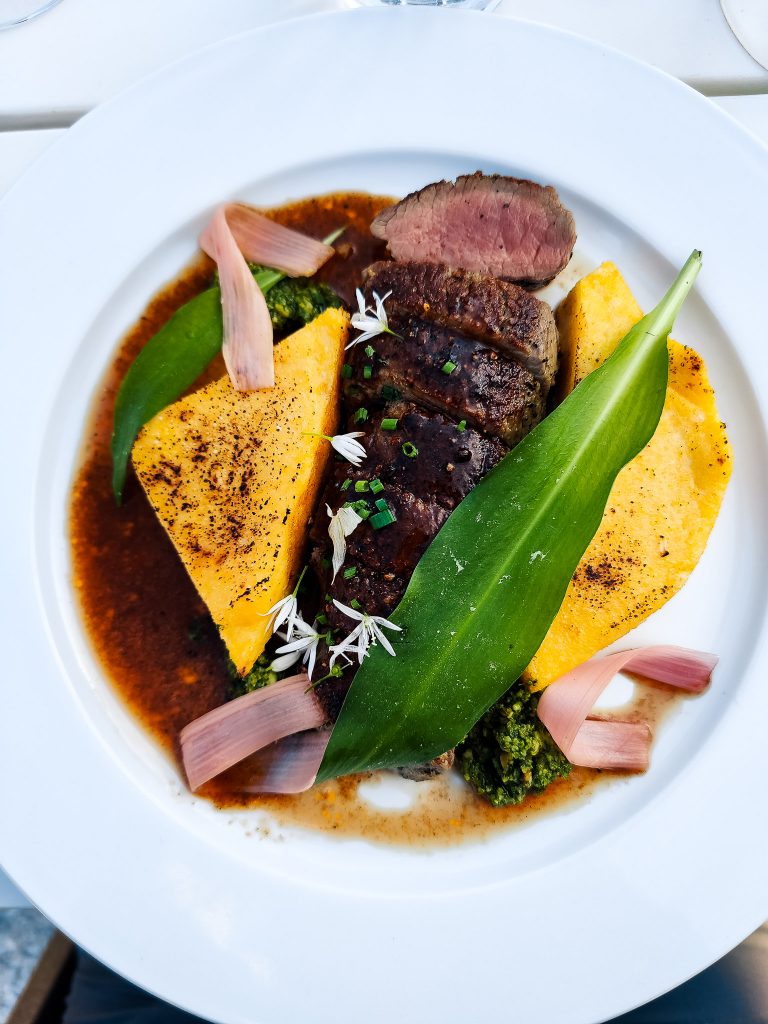
In the East of Gotland, heading South
High Season only starts from mid-June
After two days on the island of Fårö, we take the ferry back to Gotland. The northeast of the island left a lasting impression on us during our first trip, as we discovered three of our absolute favorite places here:
- Bungenäs Kalklådan - a restaurant on the site of a former limestone quarry and abandoned military area. Car-free, at the entrance, you can rent bicycles if you prefer not to walk.
- Rute Stenungsbageri - a small bakery where fantastic bread, cinnamon buns, and in the evenings, fantastic pizzas are baked in a former blacksmith's workshop. In good weather, you can enjoy delicious treats in the garden and unwind with good coffee and Bullarna.
- Furillen - on the island just off the northeastern coast of Gotland, there is a design hotel on the site of a former limestone quarry. Even if you don't stay here overnight, taking a walk around the island and through the old quarry is worth it. It feels a bit like stepping onto the moon.
However, Bungenäs Kalklådan and Rute Stenungsbageri were still closed this year. Gotland is particularly popular in the summer with its warm and sunny hours. It attracts many Swedes from the mainland to the island. That's why many shops and restaurants are only open during the summer months. Visiting the island, as we did this time at the end of May / beginning of June, has the advantage of avoiding the tourist crowds. Many of the famous attractions, such as Langhammars, were practically empty, or we had to share them with very few others. Visby was also much quieter and more relaxed during our second trip. However, this meant that two of our three favorite spots in the northeast were still closed in early June.
From Fårösund, we continued southward this year, always along the small coastal roads.
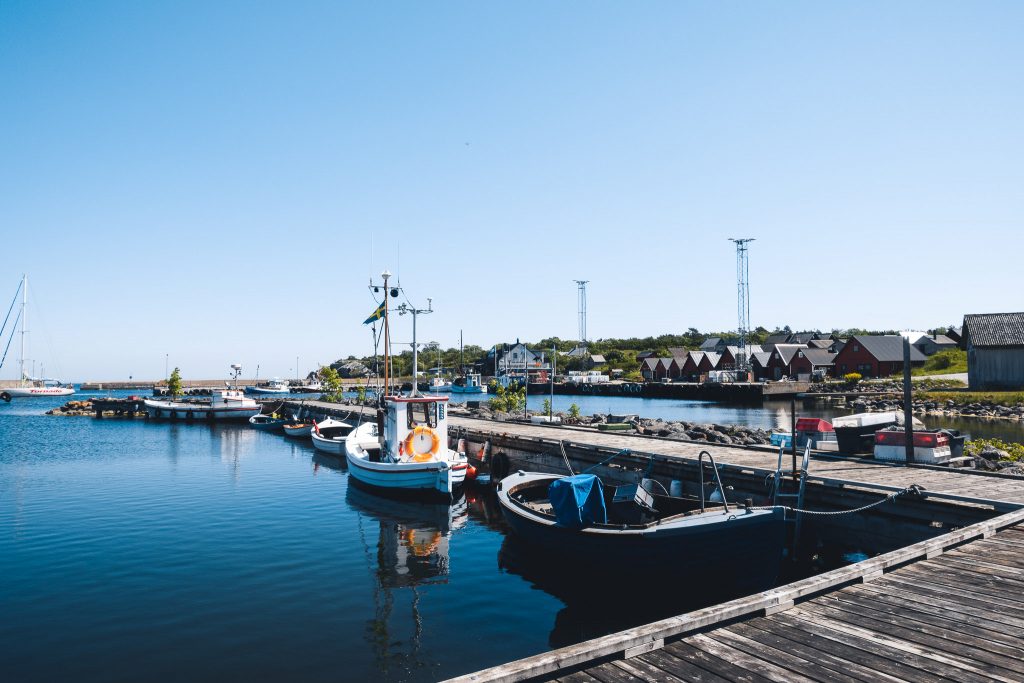
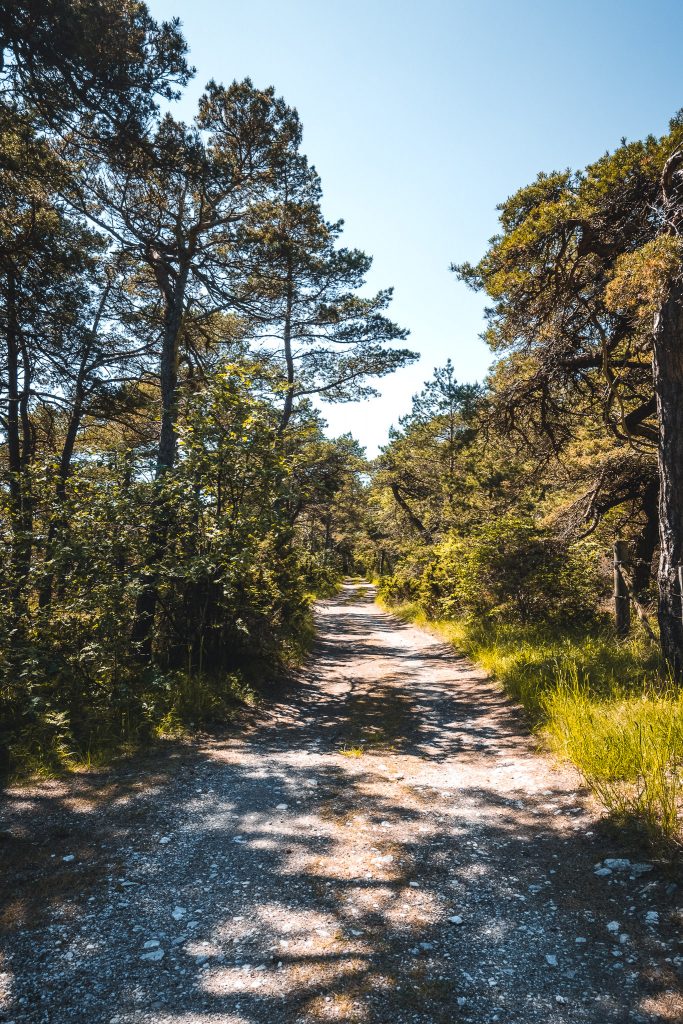
The Grogarnsberget Nature Reserve
The Grogarnsberget Nature Reserve is accessible via one of these small roads. After a short and easy climb, you can enjoy a fantastic view of Gotland's east coast. The former hillfort is the fourth-largest prehistoric hillfort in Scandinavia. A few stone walls can still be discerned. The location provided optimal protection for the people due to the 30-meter-high cliffs on three sides. This makes today's nature reserve a phenomenal vantage point to enjoy the sun with a self-brewed coffee. Just a few kilometers further, you should definitely make a stop for refreshments at Sysne Fiskbutik.
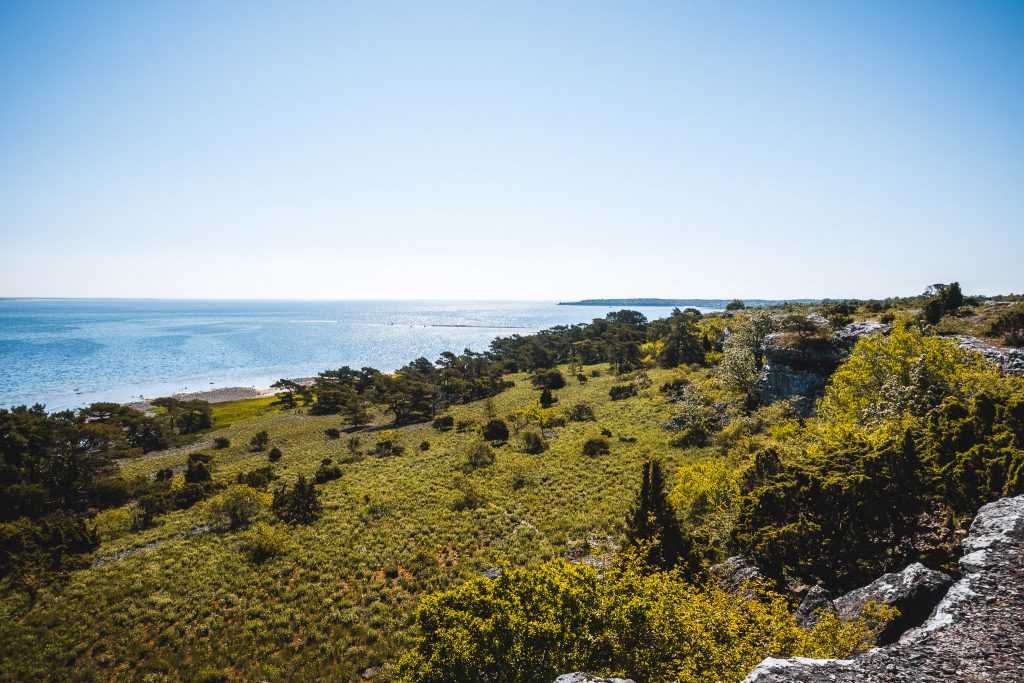
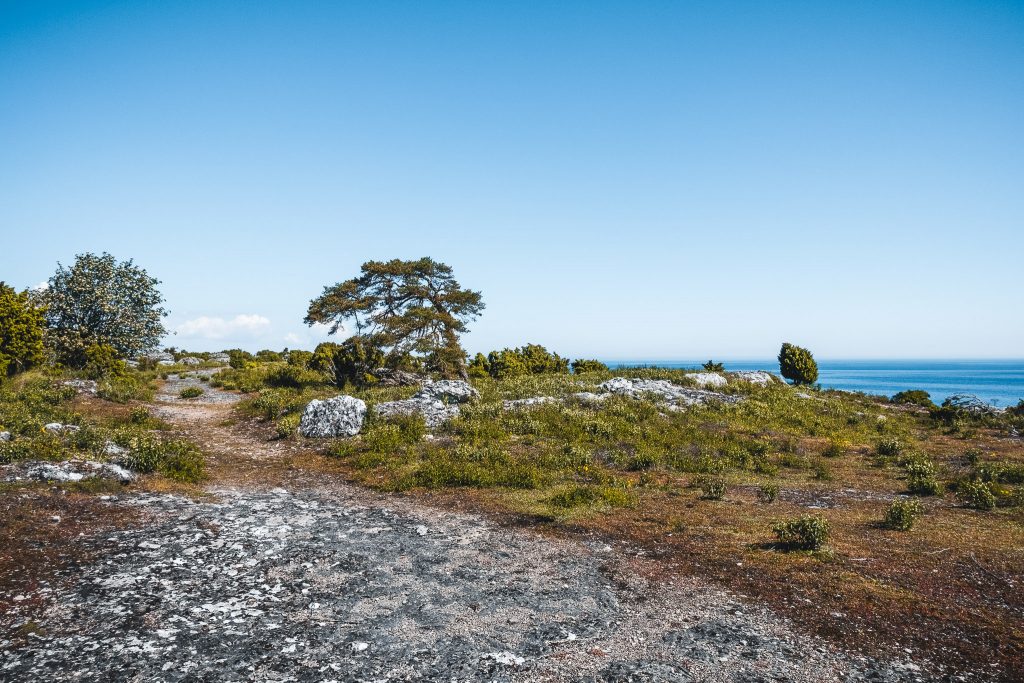
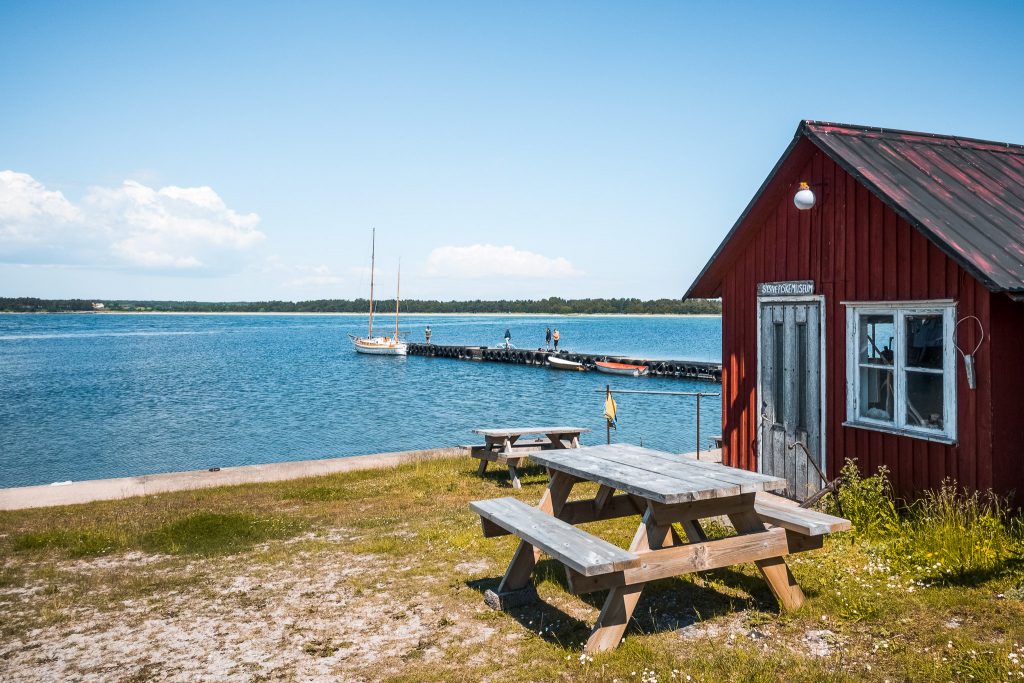
The Närsholmen Nature Reserve
Staying with nature reserves: we also liked the small Närsholmen Nature Reserve. I had never been particularly interested in birds, but it's worth packing binoculars here, although I must admit that this applies to many other places on Gotland or Fårö as well. However, you shouldn't get too close to the nesting birds if you don't want to encounter the occasional aggressive individual. While we gaze out to sea, the sun slowly disappears behind us, bathing a sea of fluffy dandelions in deep orange.

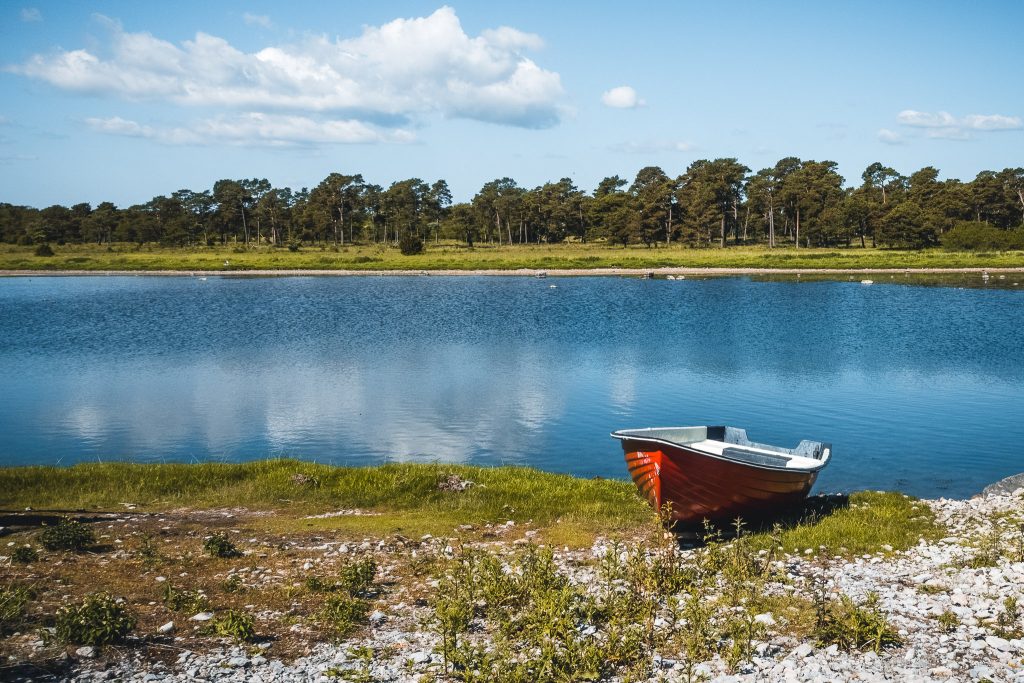
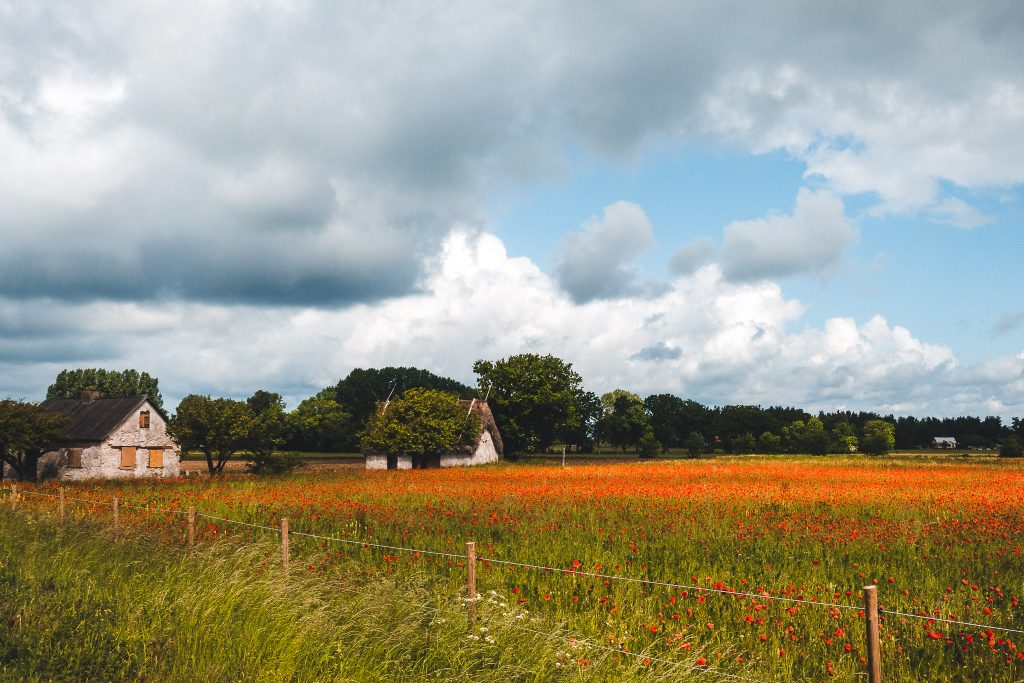
Ancient Stone Burial Mounds and the Best Cinnamon Buns in Sweden – Back to Visby
Our final stage takes us from the Närsholmen Nature Reserve back to the west of the island and back to Visby. Uppgarde Rojr is the highest stone burial mound in Gotland and one of our chance discoveries on this trip. The grave dates back to the Bronze Age (1800-500 BC), has a diameter of 50 meters, and a height of 7 meters. In addition to this one, there are some smaller graves in the vicinity. Small signs introduce you to the history of the graves and the people of that time. The graves themselves are a bit hidden from the parking area, behind some bends and trees. A small footpath points the way. With astonishment and reverence, Gotland has once again catapulted us into the past and completely fascinated us.
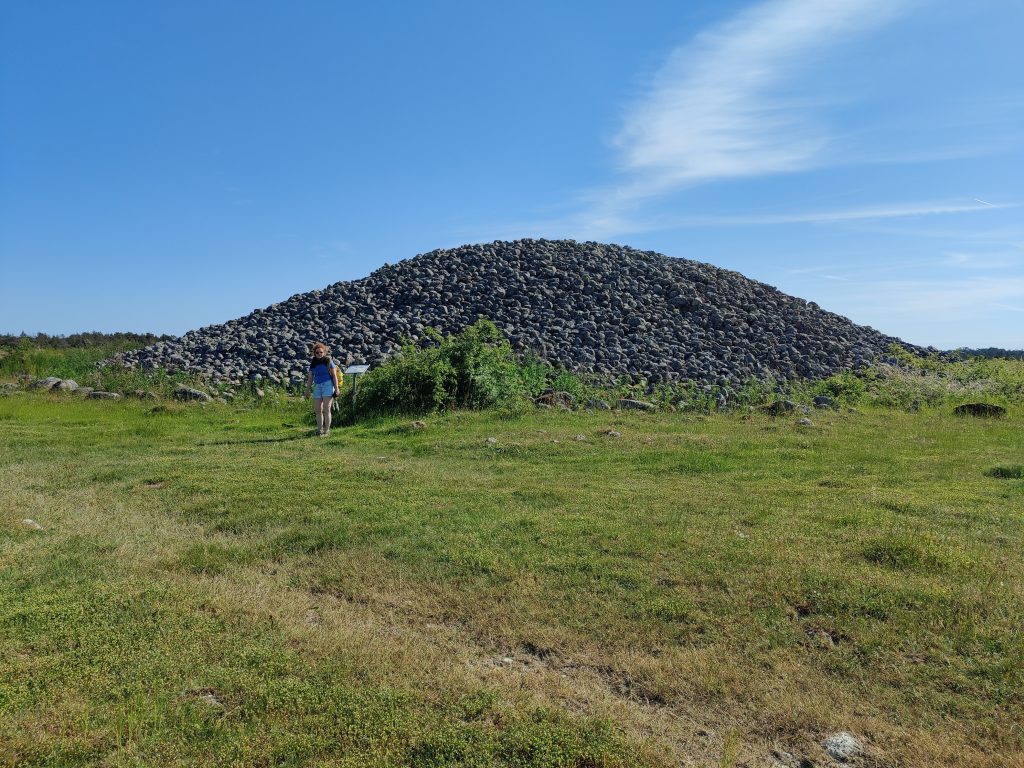
Somewhat accidentally, our path leads us to Klintehamn and there to the Warfsholm bakery. The search for good bread for dinner brings us here, and of course, I couldn't resist the cinnamon buns. Luckily, because here I have eaten the best cinnamon buns ever. I can claim to have tried quite a few. The bread is also highly recommended and made my little German bread-loving heart beat faster.
To the south of Visby, another phenomenal viewpoint awaits us before we return to Visby for one last evening. Tomorrow, we will head back to the Swedish mainland. Högklint is worth a visit.
Craftsmanship, Locals, and Lots of Good Food
Craftsmanship and Local Producers
Not only do we love this island, but it also seems to inspire the imagination and creativity of many artists and craftsmen. In addition, a number of small businesses offer a wide variety of local products. The diversity ranges from a small chocolate shop on a farm to local wool products, ceramics, and even a small candle "factory" where we could decorate our own candles. It's worth keeping your eyes open and turning off at the occasional sign to be surprised. We have often come across really great shops and nice people who pursue their passion projects with joy and enthusiasm and love to talk about their treasures.
Restaurants, Bakeries, Snack Bars, and Local Merchants
In addition to the abundance of small boutiques and workshops, Gotland also offers phenomenal food. Fish and seafood play a significant role on Gotland, which has a long fishing tradition. In addition to the typical fish restaurants, small fish shops in the villages also sell snacks and takeaway food. It's worth getting some smoked fish or shrimp to enjoy by the sea with a fresh loaf of bread.
Furthermore, many farms sell their products. Tomatoes, eggs, asparagus, potatoes – you can find everything that the farms have to offer seasonally, usually at very reasonable prices.
In addition to fish, Gotland is especially famous for its sheep. Even the Vikings bred them here, and the island's flag features a sheep. Sheep herds were a regular sight during our road trip. If you enjoy lamb, you should definitely visit one of the many restaurants that feature lamb on their menu traditionally.
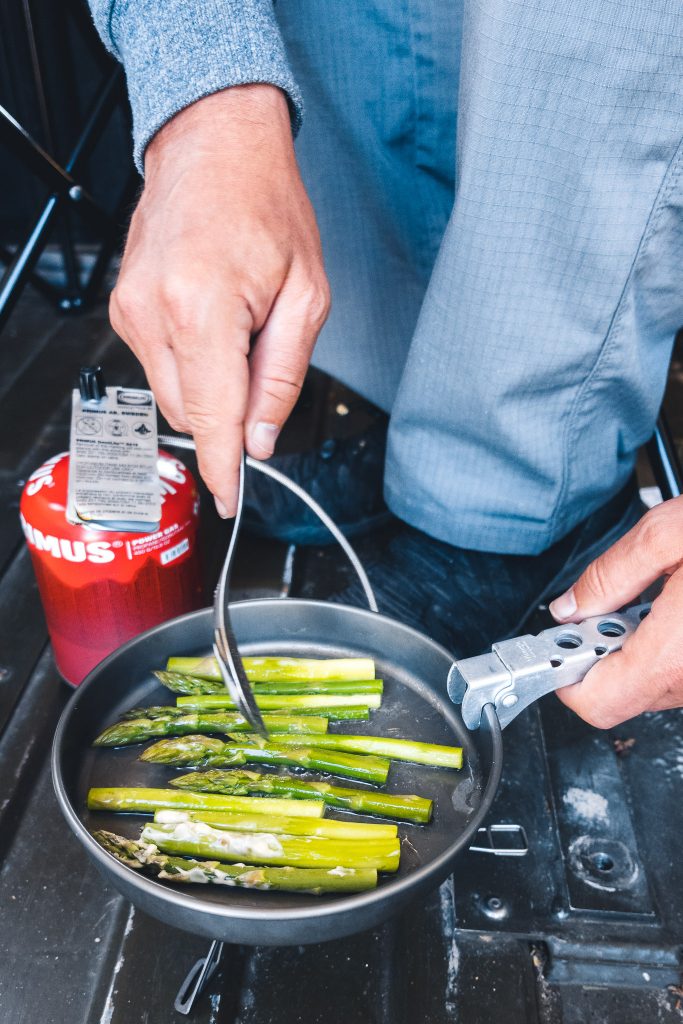
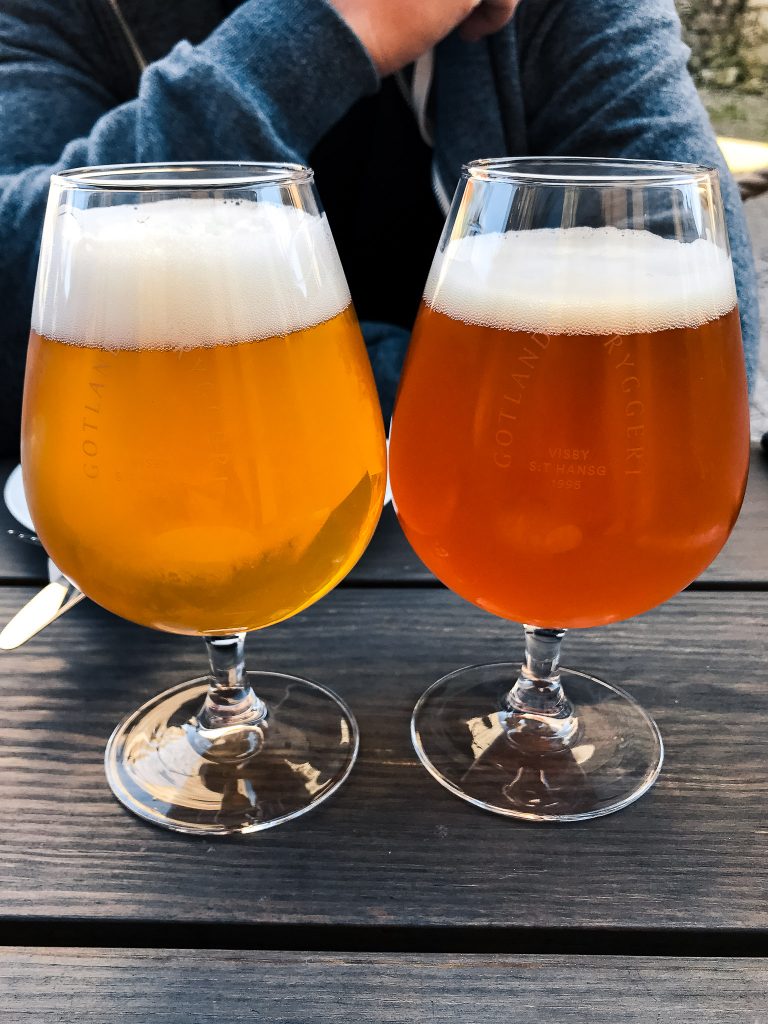
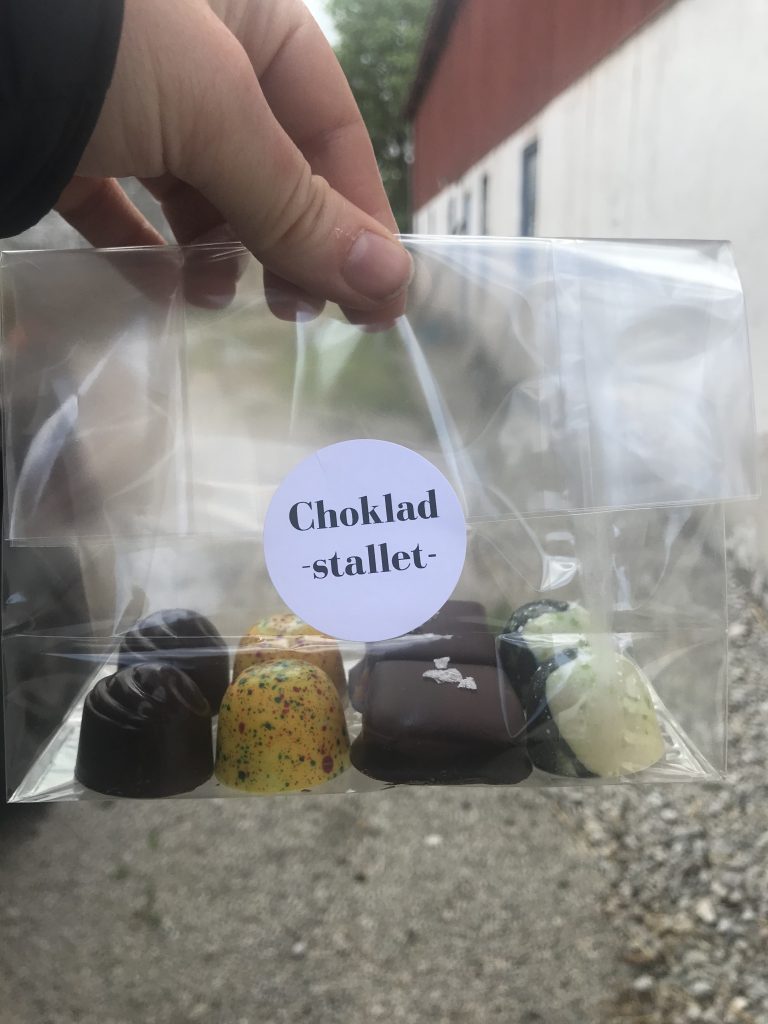
Organizational Details, Tips, and Tricks
Arrival - From Sweden, ferries regularly depart to Visby from 3 ports: Västervik, Nynäshamn, and Oskarshamn. Additionally, there is a ferry twice a week from Rostock to Visby.
Mapapp Gotland - This map is the digital version of the tourist map available at the tourist office in Visby. It covers both Visby and Gotland, including Fårö. The advantage of the digital version is the detailed descriptions of each attraction, which can be read or used as an audio guide.
Öppet Gotland - This map provides an overview of local shops, artists, artisans, etc. It not only offers a great overview of the diversity but also provides detailed information about opening hours.
- This map provides an overview of local shops, artists, artisans, etc. It not only offers a great overview of the diversity but also provides detailed information about opening hours.


